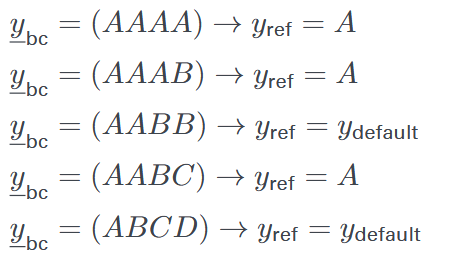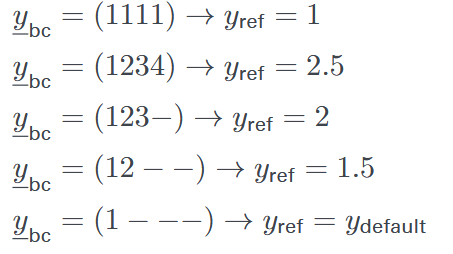System Design 1 - Chapter 5
21 May 2025, Bastian Luettig
Module: One-Step
- $M_{\text{one-step}}$ contains all redundant computer data consolidation tasks that require a broadcast (one-step data exchange)
- Workflow:
- Each single computer transmits data ($y_{\text{css}}$) that should be identical to each neighbour and that produces $\underline{y}_{\text{bc}}$
- The single computers build a reference value within $F_{\text{voting}}$
- The single computers compare each recieved datum against the reference value ...
- ... and set a failure indication if the single computer detected an unacceptable deviation
Example for one-step Services on slide 24
Note: $F_{\text{voting}}$ will use only non-passivated lanes. $F_{\text{monitor}}$ on the other hand will check every value


Conclusion
- The Module One-Step provides functions for single-step data exchange
- This is needed when we have analogue data with $A_\Delta$ or if we observer data that should already be identical
- The lanes exchange data via broadcast, compute (vote) a reference value and monitor the broadcast values against the reference value
- Any deviation for $A_=$ data leads to a failure indication and...
- ... any deviation outside the monitoring limit for $A_\Delta$ information leads to a failure indication
Module: Failure Management
The $F_{\text{failma}}$ collects failure indications into failure classes
This is important because:
- Within the system, we might have thousands of different failure indications, because each software component may throw one
- The responsible for a component might not know what to do with the indication, i.e. how to handle it
- The system responsible can combine the indications into classes
- Indications within the same class have the same effect
Failma significantly reduces the number of failure handling we have to develop
3 failure classes for the computing lanes
- $z_{\text{cls,} \lnot \text{avail}}$: indications that show a lane as offline / not available / power off
- $z_{\text{cls, fail}}$: indications that show a lane as faulty
- $z_{\text{cls, long}}$: indications that may show a lane aus faulty - but we want to confirm that very long
Failure indications:
- lane did not synchronize
- lane synchronized with wrong data
- lane had wrong information - thrown by plama core / one-step
- lane had wron information - thrown by plama actor / one-step
- lane had wrong information - thrown by plama law / one-step
- supma(platform) could not correctly attribute the failure and guessed this lane
Each service can throw its own failure indication. They are condensed into three classes. The classes are stored in
$$\text{db}_{\text{indi}}$$
as they have $A_\neq$
A descision based on these classes with $A_\neq$ would lead to loss of computer replica determinism
Module: Two-Step
The Module $M_{\text{two-step}}$ has four specific tasks:
-
confirmation of certain values
-
implementing reliable broadcast
-
combination of certain values
-
voting of certain values to gain consensus data
-
individual failure indications thrown by any Service: $z_{\text{fail}}$
-
failure management condenses the individual indications into one of 3 failure classes $z_{\text{cls,fail}} \quad z_{\text{cls,} \lnot \text{avail}} \quad z_{\text{cls,long}}$
-
$F_{\text{confirm}}$ implements that not every single event leads to a reaction
-
$F_{\text{RBC}}$ distributes the confirmed failure classes and ensures each correct lane has the same matrices
-
$F_{\text{combine}}$ condenses the confirmed classes into failure categories
-
$F_{\text{CSS}}$ votes specific signal data and creates $db_{\text{css}}$ data.